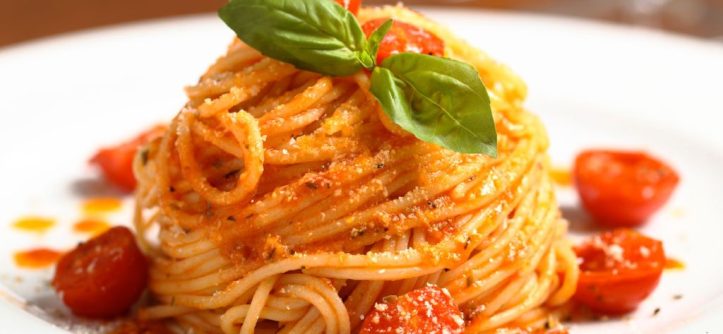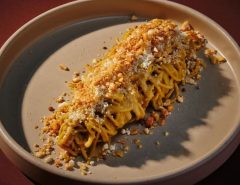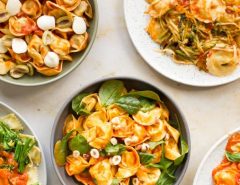Pasta, a beloved staple, transcends borders, uniting cultures through its versatility and comfort. From Italy’s iconic spaghetti to Japan’s unique ramen-inspired dishes, international pasta dishes showcase culinary creativity. This blog explores global pasta variations, highlighting their cultural significance and flavors. Whether you’re a food enthusiast or home cook, these dishes offer a taste of the world. Discover how pasta shapes global cuisine, blending tradition and innovation. Join us as we dive into dishes that fascinate, educate, and inspire.
Italian Pasta: The Heart of Mediterranean Comfort
Italy, the birthplace of pasta, offers dishes like spaghetti Bolognese and creamy carbonara. Spaghetti, paired with rich meat sauce, is a global favorite, while carbonara’s egg and pecorino blend defines comfort. According to a 2023 study by the Italian National Institute of Statistics, Italians consume 23 kg of pasta per capita annually, showcasing its cultural dominance. Each region boasts unique recipes, like Liguria’s pesto with trofie.
My first taste of authentic carbonara in Rome was unforgettable—its creamy texture and peppery kick felt like a warm hug. These dishes, rooted in tradition, adapt to modern tastes, making Italian pasta a cornerstone of global cuisine. Try making fresh pasta at home; it elevates the experience.

Asian Pasta Innovations: Fusion of Flavors and Textures
Asia reimagines pasta with bold flavors. Japan’s ramen, a noodle dish with savory broth, blends tradition with innovation. China’s lo mein, stir-fried with vegetables and protein, offers a satisfying crunch. A 2022 report by the Asian Development Bank notes that noodle consumption in Asia has risen 15% in a decade, reflecting their popularity.
Dishes like Thailand’s pad thai, with rice noodles and tamarind sauce, balance sweet, sour, and spicy. I once tried pad thai at a Bangkok street market; its vibrant flavors were a revelation. These creations show how pasta adapts to local palates, enriching global cuisine with diverse textures and tastes.
Tips for Cooking Asian-Inspired Pasta
- Use fresh ingredients: Fresh herbs and vegetables enhance flavor authenticity.
- Balance flavors: Combine sweet, sour, and spicy for a true Asian taste.
- Cook noodles al dente: Prevent mushiness by slightly undercooking.
- Experiment with sauces: Try hoisin or tamarind for variety.
Middle Eastern Pasta: A Blend of Spices and Tradition
Middle Eastern pasta dishes, like kushari from Egypt, mix lentils, pasta, and crispy onions with spiced tomato sauce. This street food, affordable and filling, reflects cultural resourcefulness. In Lebanon, macaroni with yogurt sauce offers a tangy twist. These dishes, less known globally, highlight pasta’s adaptability.
I recall savoring kushari in Cairo; its mix of textures was surprisingly delightful. Middle Eastern pasta often incorporates spices like cumin and sumac, creating bold profiles. These recipes, rooted in history, show how simple ingredients can transform into extraordinary meals, contributing to the global pasta narrative.
Latin American Pasta: Vibrant and Comforting Creations
Latin America infuses pasta with vibrant flavors. Mexico’s fideo, a toasted noodle soup, brings warmth with its tomato-based broth. In Peru, tallarines verdes, a pesto-like dish, showcases indigenous ingredients. These dishes reflect cultural fusion, blending European influences with local traditions.
Trying fideo at a Mexican friend’s home felt like a cozy family gathering. Its smoky depth was unforgettable. Latin American pasta often uses affordable ingredients, making it accessible. This adaptability ensures pasta remains a beloved part of global cuisine, connecting people through shared meals.
Common Mistakes to Avoid When Cooking Latin Pasta
- Overcooking noodles: Keep them firm to maintain texture.
- Skipping toasting: Toasting fideo adds essential flavor.
- Ignoring spices: Use cumin or chili for authenticity.
- Overloading sauce: Balance sauce and pasta for harmony.

European Pasta Beyond Italy: Diverse Culinary Expressions
Beyond Italy, Europe offers unique pasta dishes. Germany’s spätzle, soft egg noodles, pair with cheese or gravy for hearty comfort. In Hungary, csipetke noodles enhance goulash. These dishes, though less famous, showcase pasta’s role in European cuisine. Read More: Best Greek Pasta Salad Recipe: A Mouthwatering Delight!
I once tried spätzle in Munich; its chewy texture paired perfectly with creamy sauce. According to a 2024 Eurostat report, pasta consumption in Europe averages 9 kg per capita, highlighting its widespread appeal. These variations demonstrate how pasta adapts to local traditions, enriching global culinary diversity.
Why Pasta Defines Global Cuisine: A Cultural Connector
Pasta’s global appeal lies in its versatility and affordability. From Italy’s classics to Asia’s noodle innovations, it bridges cultures. Each dish tells a story of tradition, adaptation, and creativity. My travels taught me that pasta, whether in a Roman trattoria or a Bangkok stall, fosters connection.
Its ability to pair with local ingredients ensures its place in global cuisine. Whether you’re savoring ramen or kushari, pasta invites exploration. Try a new recipe today and share your experience in the comments below or on social media!
FAQs
What makes Italian pasta dishes unique?
Italian pasta emphasizes fresh ingredients and regional recipes, like creamy carbonara or Liguria’s pesto trofie.
How do Asian pasta dishes differ from Italian ones?
Asian pasta, like ramen or pad thai, uses bold flavors and local ingredients, balancing sweet, sour, and spicy.
What is a popular Middle Eastern pasta dish?
Kushari, an Egyptian street food, combines lentils, pasta, and spiced tomato sauce for a unique flavor.
Why is pasta popular in Latin America?
Latin American pasta, like Mexico’s fideo, blends European influences with local spices, creating comforting, vibrant dishes.
How can I start cooking international pasta dishes?
Experiment with authentic recipes, use fresh ingredients, and balance flavors to capture global pasta’s essence.





Leave a Reply